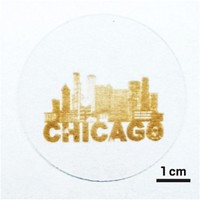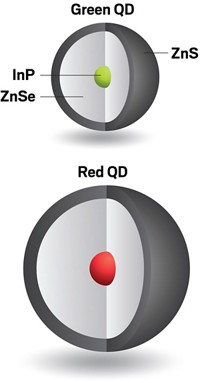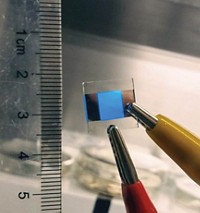Advertisement
Grab your lab coat. Let's get started
Welcome!
Welcome!
Create an account below to get 6 C&EN articles per month, receive newsletters and more - all free.
It seems this is your first time logging in online. Please enter the following information to continue.
As an ACS member you automatically get access to this site. All we need is few more details to create your reading experience.
Not you? Sign in with a different account.
Not you? Sign in with a different account.
ERROR 1
ERROR 1
ERROR 2
ERROR 2
ERROR 2
ERROR 2
ERROR 2
Password and Confirm password must match.
If you have an ACS member number, please enter it here so we can link this account to your membership. (optional)
ERROR 2
ACS values your privacy. By submitting your information, you are gaining access to C&EN and subscribing to our weekly newsletter. We use the information you provide to make your reading experience better, and we will never sell your data to third party members.
Materials
First Ultraviolet Quantum Dots Shine Brightly
Materials: Flexible, UV light-emitting diodes made with the quantum dots could find a range of applications
by Katherine Bourzac
May 27, 2015

Researchers in South Korea have made the first quantum dots that emit ultraviolet light and used them to make a flexible, light-emitting diode (Nano Lett. 2015, DOI: 10.1021/acs.nanolett.5b00392). If their lifetimes can be improved, these potentially low-cost UV LEDs could find uses in counterfeit currency detection, water sterilization, and industrial applications.
UV light is typically produced by mercury lamps or LEDs made from inorganic materials such as gallium nitride. But mercury lamps tend to emit a broad swath of visible wavelengths in addition to UV, while high-performance gallium nitride LEDs are expensive to make. Quantum dots are an attractive alternative, says Changhee Lee, an electrical engineer at Seoul National University. By controlling the size and shape of these nanocrystals, made out of a semiconductor material, researchers can precisely tailor which wavelength the quantum dots emit. Quantum dot LEDs can also be made using potentially less expensive solution-based processes.
Until now, no one had succeeded in making quantum dots that emit wavelengths shorter than about 400 nm, which marks the high end of the UV spectrum. The smaller the crystal, the shorter the wavelength of the light it emits. To get UV nanocrystals, Lee and his colleagues Seonghoon Lee and Kookheon Char had to figure out how make quantum dots with light-emitting cores smaller than 3 nm in diameter.
To make the dots, the group chose cadmium zinc sulfide, a compound that emits high-frequency light. They started by growing 3-nm crystals of CdZnS in solution. Lee and his colleagues then coated the nanocrystals with a zinc sulfide shell, which not only protects them from surface impurities but also shrinks them. During the coating process, cadmium migrates into the shell, contracting the core diameter to about 2.5 nm and shifting the emitted light into the blue. Lee’s quantum dots emit true UV radiation, at about 377 nm. “We can go to much shorter wavelengths than people generally expected from quantum dots,” Lee says.
Lee’s group then made a flexible LED with the quantum dots, using a design for a high-efficiency device they developed in 2012 (Nano Lett., DOI: 10.1021/nl3003254). The researchers showed that the UV LED could illuminate an anticounterfeiting mark in a bill of paper currency.
Franky So, a materials scientist at the University of Florida, says making a device out of the quantum dots that shines brightly enough to reveal the currency mark is a remarkable accomplishment. The quantum dots are more stable than So would have expected.
These first-of-their-kind UV quantum dots, however, are currently not stable enough for commercial use, Lee says. His group is now working on further improving the quantum dots to make them brighter. They’re also updating the LED design to increase the lifetime of the materials.





Join the conversation
Contact the reporter
Submit a Letter to the Editor for publication
Engage with us on Twitter